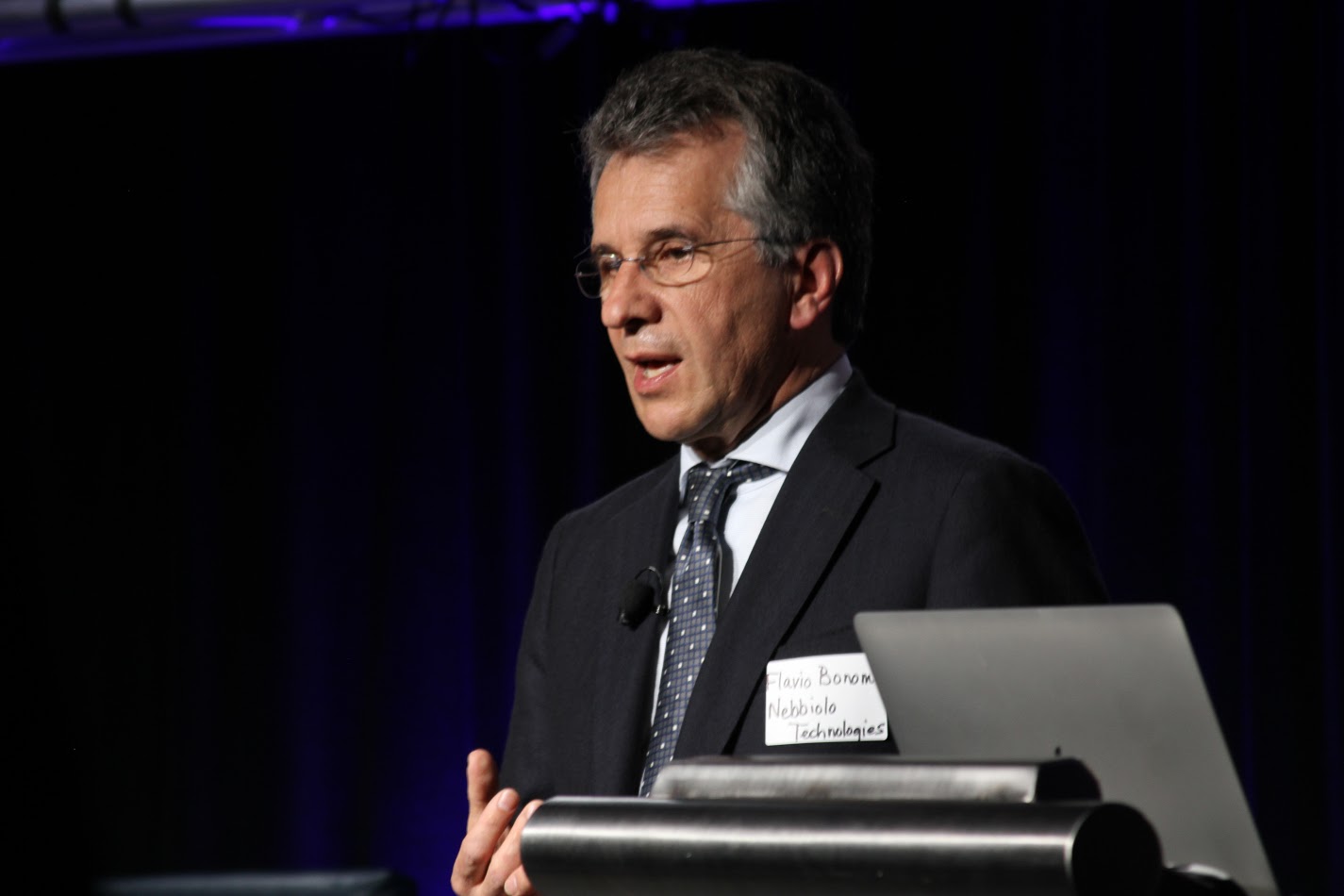 CLOUD
CLOUD
 CLOUD
CLOUD
 CLOUD
CLOUD
The Internet of Things may solve some problems in industrial IT and operational technology, but some say the barrage of sensors, connected devices and associated data merely adds more pieces to an already crowded and fragmented environment. Can a cloud-like “fog” layer make all those miscellaneous, flaky parts gel?
Flavio Bonomi, founder and chief executive officer of Nebbiolo Technologies Inc. and former Cisco Fellow for Fog Computing, believes it can. During the keynote at the Western Digital: Taking the Cloud to the Edge With Fog Computing event in San Jose, CA, Bonomi made his case.
“Fog computing is really the platform that brings modern cloud inspired computing […] and networking functions closer to the data-producing sources,” Bonomi said.
Fog is not just about migrating cloud aspects down to devices, “it’s also bringing functions up from the machine world — the real time, the safety functions, the trust and reliability functions,” he stated.
This convergence of machines and devices with the cloud is crucial in industrial environments and in autonomous vehicles, Bonomi said. Large industrial floors, automotive body shops and the like have hordes of robots and computers to manage.
“This is the world of PLCs, industrial PCs controlling robots — very fragmented,” he said. These dedicated and isolated computers make up a secure, but very rigid environment — and that is the state of edge computing for now.
Is IoT helping to pull all of these fragmented parts together? It is, but not enough. “It’s still not solving the problem, because now you have to put little machines, gateways into that region; one more machine to manage, one more machine to secure,” Bonomi explained.
A fog compute level is crucial to IoT’s usefulness in industries. Bonomi said there is a kind of firewall between OT and IT, which must be bulldozed by a fog layer. “The story is told once you really go one step deeper, in fact from connectivity between information technologies and operations technologies to convergence,” he said.
Industries can then start to replace machines supporting each cell with a fog node: “a powerful convergent point of real-time computing that can allow control, analytics and storage and networking in the same nodes,” Bonomi stated.
A car is also a bunch of poorly connected computers, even more so in the realm of autonomous vehicles, he explained. Here, a fog layer that brings them together will be crucial. “We are going toward a fog node on wheels,” he said.
Bonomi called fog’s potential “cataclysmic” but said that it will take many hands to bring it to fruition. “Nobody has all the pieces — no Cisco, no GE and so on. In fact, they are all trying to create the ecosystem. So let’s play,” he said.
Watch the complete video interview below, and be sure to check out more of SiliconANGLE’s and theCUBE’s coverage of Western Digital’s “Taking the Cloud to the Edge with Fog Computing” event. (*Disclosure: Western Digital is a sponsor of segments on SiliconANGLE Media’s theCUBE. Neither Western Digital nor other sponsors have editorial control over content on theCUBE or SiliconANGLE.)
THANK YOU